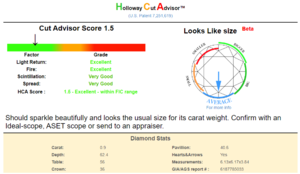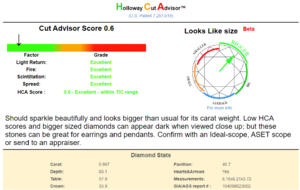TODiamonds
Shiny_Rock
- Joined
- Jul 27, 2019
- Messages
- 260
I often see the experts on this forum mentioning whether a diamond faces up big or small vs it's carat size.
I've always wondered how you guys determine that - is there a chart or tool online that I can refer to?
I've found a few guidelines for certain popular sizes (1, 1.5, 2.0, etc) but I'm looking for something more precise down to the x.xx carat. As an example, my stone is 1.62 carats and spread is 7.50x7.52 and I would love to determine whether that's average, big or small.
Thanks!
I've always wondered how you guys determine that - is there a chart or tool online that I can refer to?
I've found a few guidelines for certain popular sizes (1, 1.5, 2.0, etc) but I'm looking for something more precise down to the x.xx carat. As an example, my stone is 1.62 carats and spread is 7.50x7.52 and I would love to determine whether that's average, big or small.
Thanks!









300x240.png)